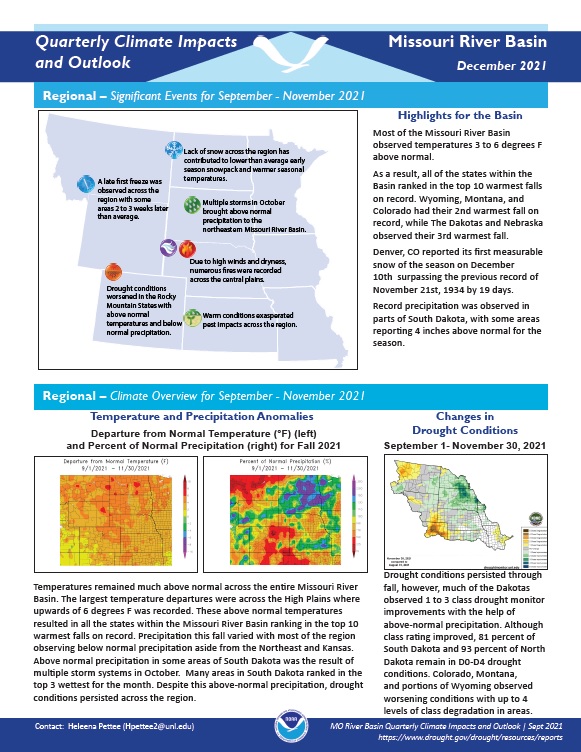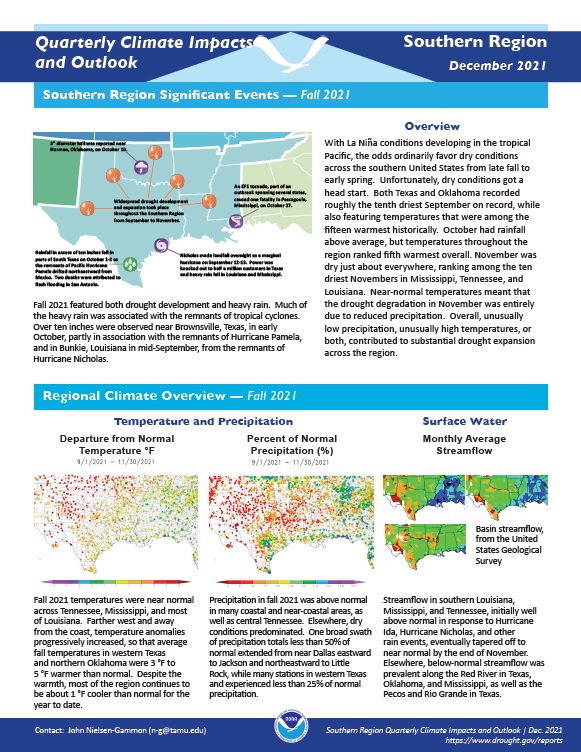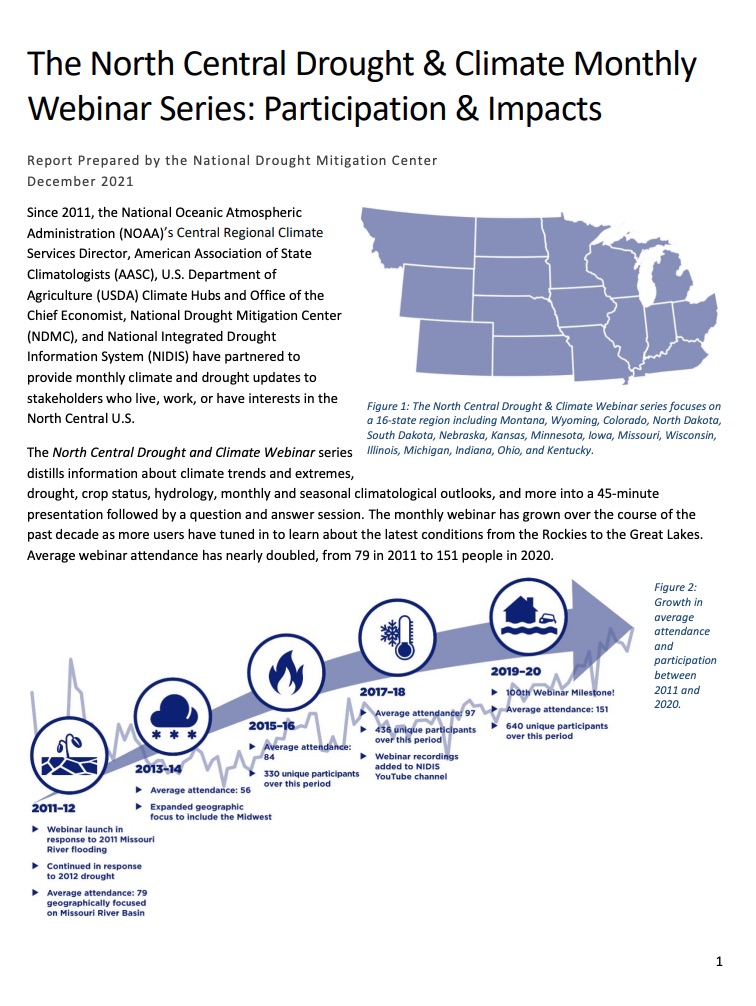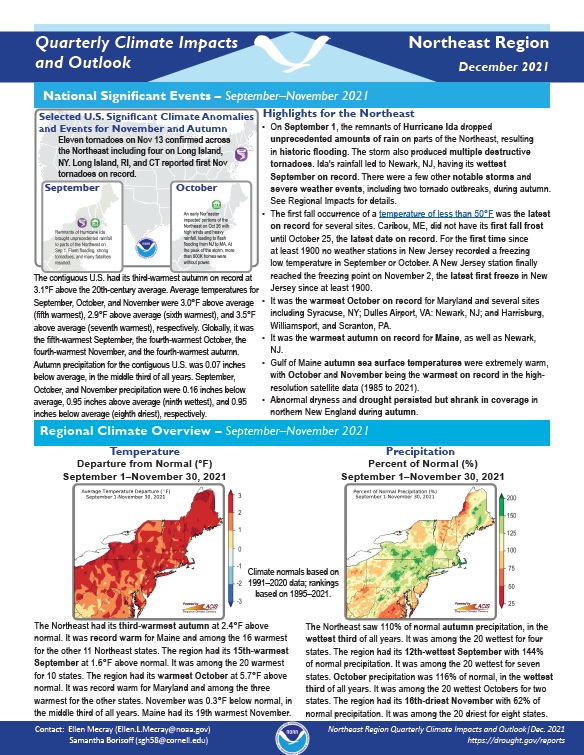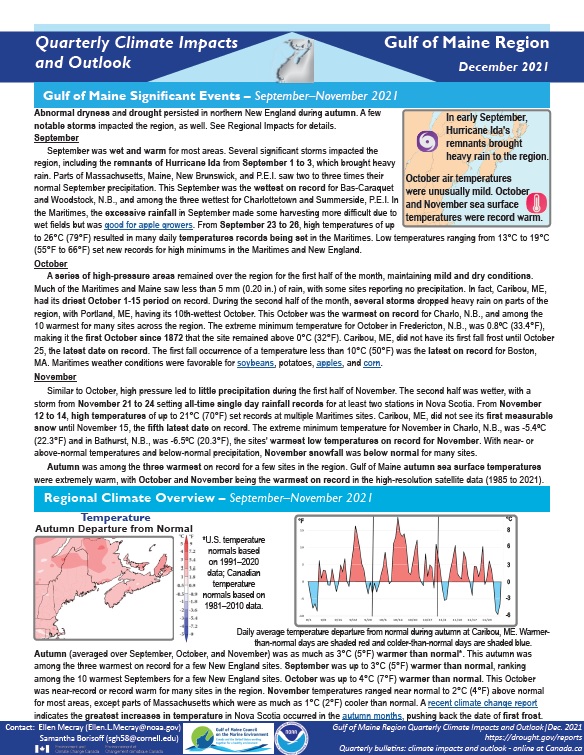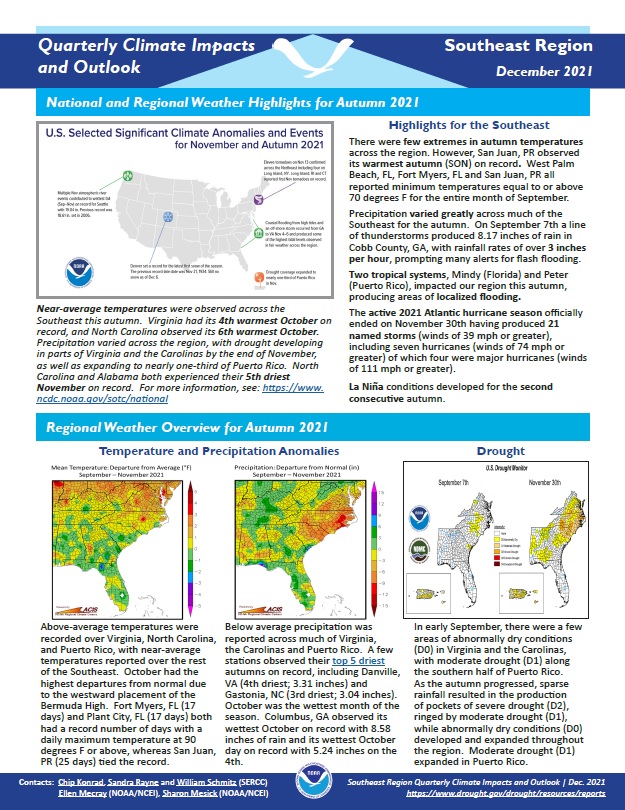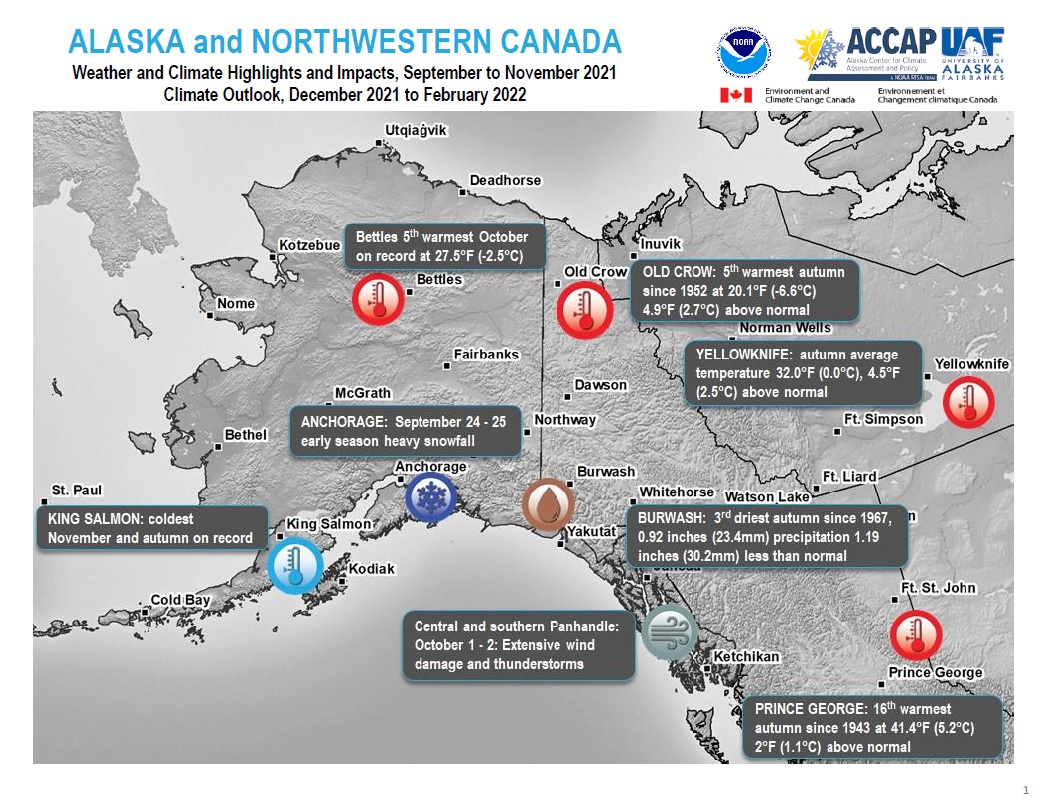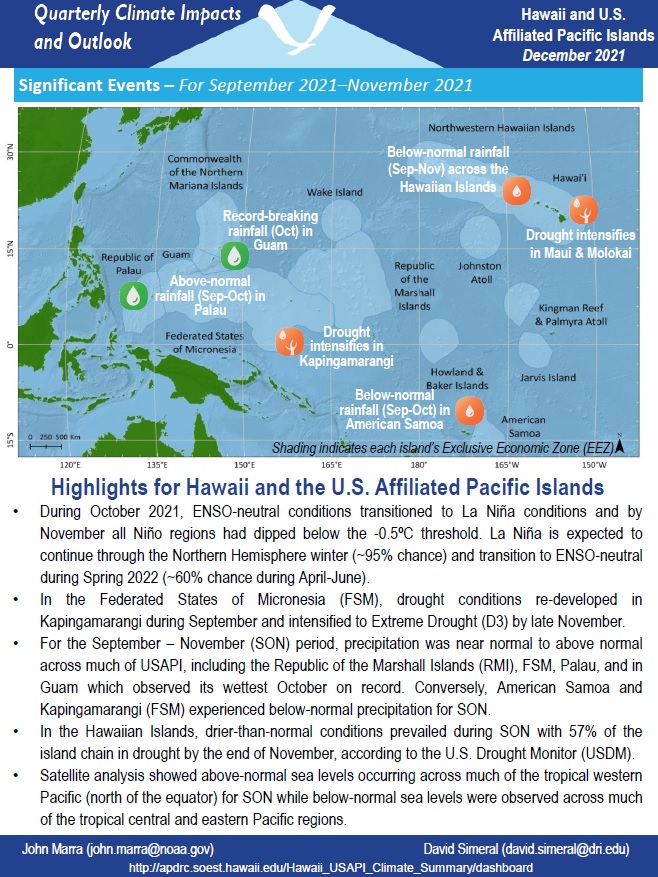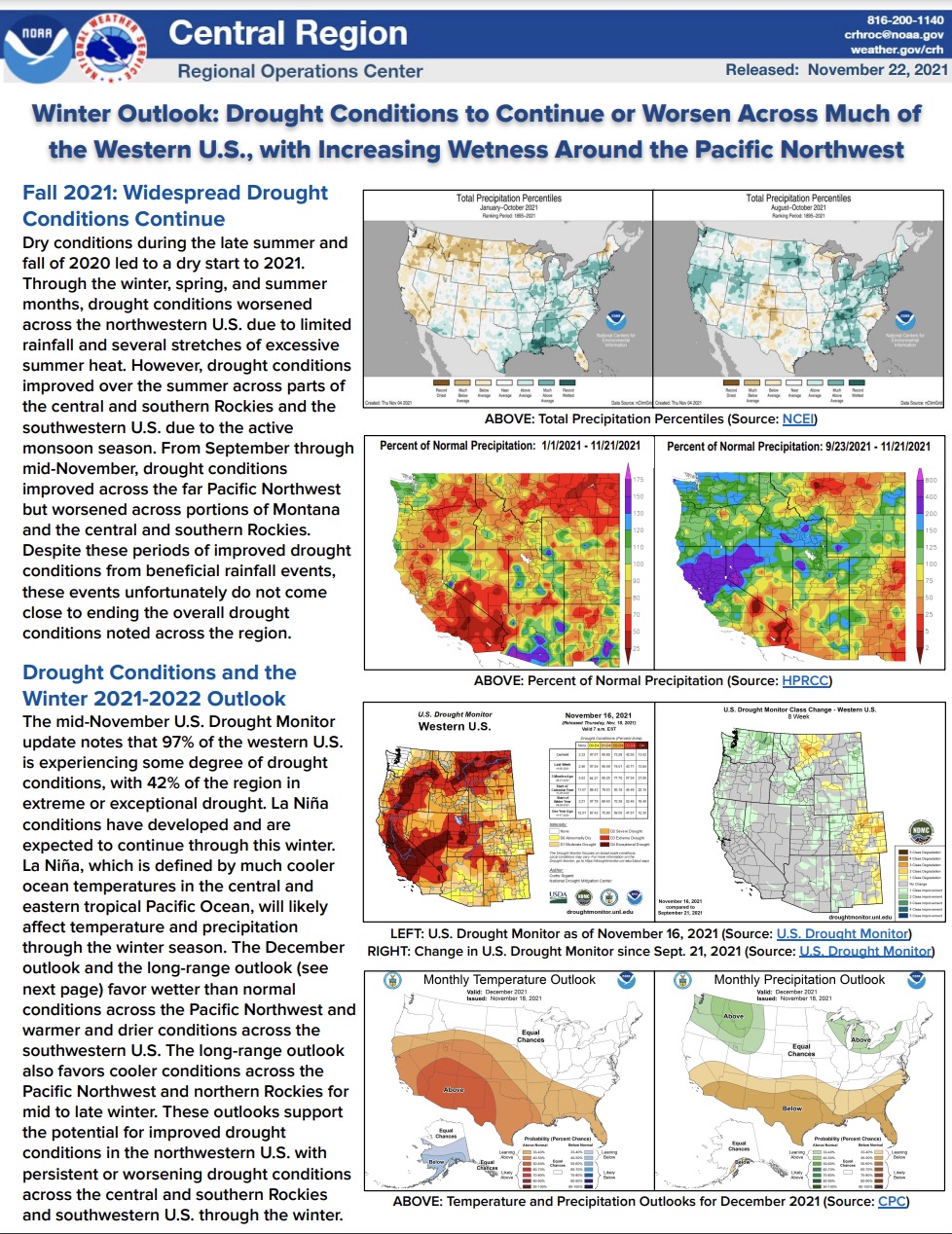Quarterly Climate Impacts and Outlook for the Missouri River Basin September - November 2021. Dated December 2021.
Temperatures remained much above normal across the entire Missouri River Basin. These above normal temperatures resulted in all the states within the Missouri River Basin ranking in the top 10 warmest falls on record. Precipitation this fall varied with most of the region observing below normal precipitation aside from the Northeast and Kansas.
Quarterly Climate Impacts and Outlook for the Southern Region for September - November 2021. Dated December 2021.
Fall temperatures were near normal across Tennessee, Mississippi, and most of Louisiana. Farther west and away from the coast, temperature anomalies progressively increased. Precipitation was above normal in many coastal and near-coastal areas, as well as central Tennessee. Elsewhere, dry conditions predominated.
Since 2011, the National Oceanic Atmospheric Administration’s Central Regional Climate Services Director, American Association of State Climatologists, U.S. Department of Agriculture Climate Hubs and Office of the Chief Economist, National Drought Mitigation Center (NDMC), and National Integrated Drought Information System have partnered to provide monthly climate and drought updates to stakeholders who live, work, or have interests in the North Central U.S.
Quarterly Climate Impacts and Outlook for the Northeast Region for September - November 2021. Dated December 2021.
The Northeast had its third-warmest autumn at 2.4°F above normal. It was record warm for Maine and among the 16 warmest for the other 11 Northeast states. The Northeast saw 110% of normal autumn precipitation, in the wettest third of all years. It was among the 20 wettest for four states.
Quarterly Climate Impacts and Outlook for the Gulf of Maine Region for September - November 2021. Dated December 2021.
Autumn was as much as 3°C (5°F) warmer than normal. This autumn was among the three warmest on record for a few New England sites. Autumn precipitation ranged from 50% of normal to 175% of normal.
Quarterly Climate Impacts and Outlook for the Southeast Region for September - November 2021. Dated December 2021.
Above-average temperatures were recorded over Virginia, North Carolina, and Puerto Rico, with near-average temperatures reported over the rest of the Southeast. Precipitation varied greatly across much of the Southeast for the autumn.
Quarterly Climate Impacts and Outlook for Alaska and Northwestern Canada for September–November 2021, with an outlook for December 2021–February 2022. Dated December 2021.
During Autumn 2021, the southern and central regions of British Columbia were greatly impacted by extreme weather, whereas the Yukon was far less affected. Rainfall was slightly above average for most locations in Yukon except for Old Crow, where the rainfall of 2.1 inches (53.9 mm) was 79% of the total normal amount.
Quarterly Climate Impacts and Outlook for the Pacific Region for September - November 2021. Dated December 2021.
During October 2021, ENSO-neutral conditions transitioned to La Niña conditions, and by November all Niño regions had dipped below the -0.5ºC threshold. La Niña is expected to continue through the Northern Hemisphere winter (~95% chance) and transition to ENSO-neutral during Spring 2022 (~60% chance during April–June).
This handout provides information on the typical La Niña winter pattern; the precipitation implications; other factors; and the winter outlook for the Northeast region. Updated November 2021.
NOAA’s Regional Climate Services Program created these outlooks to inform the public about climate impacts within their respective regions. Each regional report contains easy-to-understand language, and anyone can access them through the Drought Portal.
The National Weather Service Central Region developed 2021–2022 Winter Hazard Outlooks in coordination with NOAA's National Centers for Environmental Information and National Integrated Drought Information System (NIDIS); U.S. Department of Agriculture; High Plains Regional Climate Center; and National Interagency Fire Center's Geographic Area Coordination Centers. This outlook highlights the various Winter hazards that could occur and potential impacts across the Western U.S.


